The George Burch Fellowship in Theoretical Medicine and Affiliated Theoretical Science
2021 Deadline: November 1, 2020 11:59 PM EST
Background
Dr. George E. Burch Jr., was an award-winning cardiologist who established this fellowship through his generosity in the hope that it would “provide the means for future significant discovery and advances in knowledge.”
As he described in his 1976 American Heart Journal editorial “Of Venture Research,” Dr. Burch expressed the need for individuals to “research in the search of knowledge for the sake of knowledge.” He wholeheartedly believed in order to achieve revolutionary discoveries and studies, researchers must be distant from pressures of grant councils and publication demands. Dr. Burch supported the idea of providing researchers with grants “to do whatever research they want—alone free from frustration, to think, to delve into the unknown, to satisfy their curiosity.”
This unique thinking inspired the George E. Burch Fellowship Program and other programs separate from the Smithsonian, such as the MacArthur Foundation Fellowship Program.
The George E. Burch Fellowship Program supports independent post-doctoral research or study related to Smithsonian collections, facilities, or experts in the fields of medicine, biology, chemistry, the social sciences, and the humanities as they apply to human health and medicine.
To learn more about Dr. George Burch, please click here.
Purpose
The purpose of the George E. Burch Fellowship is to support a distinguished scholar in residence at the Smithsonian. The fellow may work in any discipline, but the creative effort should, in accordance with the wishes of the donor, be related to human medicine. Dr. Burch’s goal is to permit the fellowship recipient time to think with freedom and creativity, and thereby stimulate new medically related theories in his or her discipline.
Eligibility
The fellowship is eligible for post-doctoral scholars, whose research interests lie within medicine, biology, physics, chemistry, and fields in the social science and humanities, as it applies to human health and medicine.
For this fellowship Dr. George E. Burch envisioned awardees who not only possess a strong interest in health or medicine, but have been confined by their usual responsibilities and overlooked by traditional funding sources.
The recipient must be in residence at the Smithsonian Institution.
How It Works
Applicants must propose research that is conducted at the Smithsonian in an area of research outlined in the publication, Smithsonian Opportunities for Research and Study (SORS). Applicants should contact staff members to help identify potential advisors, determine the feasibility of the proposed research being conducted at the Smithsonian Institution, and the availability of relevant resources such as staff, collections, archives and library materials during the proposed tenure dates. Current Smithsonian research staff members can be found here.
Applications are evaluated and fellows are selected, by scholars, on the basis of the proposal’s merit, the applicant’s ability to carry out the proposed research and study, its application to health and medicine, the likelihood that the research could be completed in the requested time, and the extent to which the Smithsonian, through its research staff members and resources, could contribute to the proposed research. The number of appointments made each year is determined by the availability of funds for the program.
Applications must be submitted by November 1, 2020
The George E. Burch Fellowship carries a base stipend of $60,000/per year for up to two years (prorated for shorter periods of time) plus up to $4,000 per year in research allowances and possible travel relocation.
How to Apply:
Apply Through: SOLAA
The application for centrally funded George E. Burch Fellowship is not listed under the museum, research facility or office in which the applicant proposes to conduct research. Applicants for centrally funded George E. Burch Fellowship need to select the application found under the Office of Fellowships in SOLAA.
- Applications must be received no later than 11:59 pm EST on November 1, 2020 via SOLAA
- You should correspond with your proposed Smithsonian advisor(s) as you prepare your proposal (being sure to discuss potential research costs) with your proposed advisor(s) before submitting your application
- All application materials must be presented in English (foreign transcripts may be translated)
Once you have created an account and logged into SOLAA you will need to complete all the required information including:
- Mailing address
- Academic history
- Current university or college
Please be sure to apply for the correct year program cycle.
The following must be uploaded with your application:
Abstract
- No more than one page
Research Proposal
- The full statement of your research you plan to undertake at the Smithsonian and it must include a description of its application to human health and medicine.
- Maximum six pages double spaced (not including references)
- Paper size should be 8.5 by 11 inches (210 mm x 297 mm)
- 12 point type
In preparing your proposal, be sure to provide and address the following:
- Methodology
- The importance of the work both in relation to the broader discipline and to your own scholarly goals and it’s relation to human health and medicine
- Justification for conducting your research at the Smithsonian and utilization of research facilities and resources
- Identification of the member of the Smithsonian’s research staff who might serve as your principal advisor/host
- Identification of potential co-advisor(s) and/or consultant(s) if applicable
Time Table
- Estimate of time period for each phase of the research proposed (up to a total of 2 years)
- This needs to be uploaded for the application material name “Other” in SOLAA
- The dates of tenure proposed in the application (and any change of dates if the fellowship is awarded) should be selected in agreement with the proposed principal advisor
Budget and Justification
- Budget and justification for equipment, supplies, research-related travel costs, and other support required to conduct the research itself up to $4,000 per year
- Do not include stipend and/or relocation costs
- If the funds exceed the maximum research allowance, please explain the source of additional funds
Bibliography
- Bibliography of literature relevant to the applicant’s proposed research
Curriculum Vitae
- Including previous and current fellowships, grants, and/or awards, and a description of your research interests.
- If English is not your native language, describe the level of your proficiency in reading, conversing, and writing in English
Transcripts (unofficial are acceptable)
- Transcripts (or other materials when transcripts are not issued) from all appropriate institutions are required except for senior fellowship applications
- Applicants for George E. Burch Fellowship need only submit graduate transcripts
- If transcripts or other materials are not in English the applicant should provide translations
References
- Names and email addresses of two persons familiar with your work. Ideally, don’t make your proposed SI advisor one of your referees because they already will have an opportunity to offer feedback about your proposal as part of the application review process
- All reference letters are considered confidential unless confidentiality has been waived by the reference
- Provide a copy of your proposal to your references
- Through SOLAA you will send an email to these referees so they can provide references through the web
In order to have the greatest impact on a candidate’s application, referees are asked to submit references no later than the application due date. However, references can be included with a candidate’s application packet up to one month after the application due date. Please note that while not having references included with an application does not automatically disqualify an application, the absence of references may weaken a proposal in the eyes of reviewers.
Past Fellows
1991 - Dr. Paul Ewald (Burch Fellow at Smithsonian Tropical Research Institute): Research in Evolutionary Epidemiology From Dr. Ewald’s research he produced the Evolution of Infectious Disease which was published January 1994. The author, (Dr. Ewald) presents the first detail explanation of an evolutionary perspective on infectious disease. 1994 - Pedro E. Azofeira, (Smithsonian Astrophysical Observatory): Research on Theoretical and Applied Aspects of Vertebrate Genetics 1995 - Dr. Ronald Walsworth (Smithsonian Astrophysical Observatory): Investigation of Laser-Polarized Xenon Magnetic Resonance for Biomedical Application Dr. Walsworth is a co-discoverer of the light storage technique using electromagnetically induced transparency. Development of astro-combs to aid discovery of Earth-like planets around other stars; precision spin measurements and magnetometry using Nitrogen Vacancy centers in diamond; precise tests of physical laws and symmetries using atomic clocks; and biomedical and materials science investigations using MRI of hyperpolarized noble gas and nanoparticles. 1996 - Dr. Tracie E. Bunton (National Zoological Park): Research on the Evolution of Regulatory Gene Clusters in Vertebrates 1999 - Steven Weiner (Museum Conservation Institute): Biomineralization Process: the Study of Mineral Formation by Organisms1990-1999
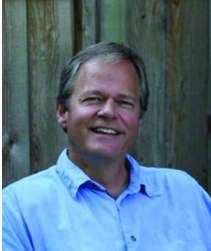 In 1991, Dr. Ewald was offered an appointment as the first Burch Fellow in Theoretical Medicine and Affiliated Science. Dr. Ewald was researching the evolutionary development of pathogens such cholera, small pox tuberculosis, malaria, and dysentery.
In 1991, Dr. Ewald was offered an appointment as the first Burch Fellow in Theoretical Medicine and Affiliated Science. Dr. Ewald was researching the evolutionary development of pathogens such cholera, small pox tuberculosis, malaria, and dysentery.
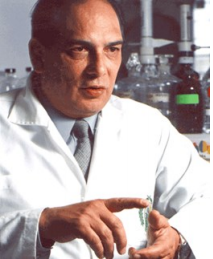 Pedro León Azofeifa, a biologist, is director of the Center for Advanced Studies at the University of Costa Rica. He established the first molecular biology lab in Costa Rica, in which he conducted research in genetics and molecular biology for 25 years. His communication skills were recognized by the medical students of the San Juan de Dios Hospital in 2002 with the “Quijote” award for teaching. He serves as scientific advisor to former Costa Rican President, Oscar Arias Sánchez, and was instrumental in establishing the National Park system of Costa Rica. Dr. León is a founding member of the National Academy of Sciences-Costa Rica, foreign associate of the Latin American Academy of Sciences (ACAL), and foreign associate of the National Academy of Sciences of the United States since 2004.
Pedro León Azofeifa, a biologist, is director of the Center for Advanced Studies at the University of Costa Rica. He established the first molecular biology lab in Costa Rica, in which he conducted research in genetics and molecular biology for 25 years. His communication skills were recognized by the medical students of the San Juan de Dios Hospital in 2002 with the “Quijote” award for teaching. He serves as scientific advisor to former Costa Rican President, Oscar Arias Sánchez, and was instrumental in establishing the National Park system of Costa Rica. Dr. León is a founding member of the National Academy of Sciences-Costa Rica, foreign associate of the Latin American Academy of Sciences (ACAL), and foreign associate of the National Academy of Sciences of the United States since 2004.
 Dr. Walsworth Burch Fellowship was at the Smithsonian Astrophysical Observatory and was seed funding that led to the development of a new form of open-access, walk-in MRI for lung imaging, with the first human-approved version of this new medical imaging technology now located and being used at the Massachusetts General Hospital.
Dr. Walsworth Burch Fellowship was at the Smithsonian Astrophysical Observatory and was seed funding that led to the development of a new form of open-access, walk-in MRI for lung imaging, with the first human-approved version of this new medical imaging technology now located and being used at the Massachusetts General Hospital.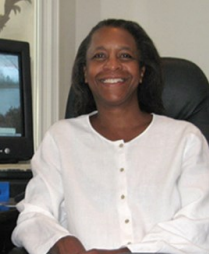 Dr. Bunton was a Burch Fellow at the National Zoological Park. Dr. Bunton set up a laboratory to further study fish skin carcinogenesis. She used the RNA data to establish a DNA library of regulatory gene clusters in invertebrates. During Dr. Bunton fellowship she was a presenter at the annual meeting of the American College of Veterinary Pathologists in Albuquerque, New Mexico. Also, she was a presenter at the World Health Organization International Agency for research on cancer working groups in Lyon, France.
Dr. Bunton was a Burch Fellow at the National Zoological Park. Dr. Bunton set up a laboratory to further study fish skin carcinogenesis. She used the RNA data to establish a DNA library of regulatory gene clusters in invertebrates. During Dr. Bunton fellowship she was a presenter at the annual meeting of the American College of Veterinary Pathologists in Albuquerque, New Mexico. Also, she was a presenter at the World Health Organization International Agency for research on cancer working groups in Lyon, France. Mr. Weiner was studying mineral formation by small vertebrate animal’s tissue at the Museum Conservation Institute formally known as Smithsonian Center for Materials Research and Education. During his study he was able to find mRNA and cDNA samples from the tissues which were placed into a collection library. Mr. Weiner purified and characterized the aragonite nucleating protein from the specimens in order to sequence and identify the cDNA. Once this was done, he compared the data from his mollusk library to the mollusk library at University of California at Santa Barbara. This information was shared with Smithsonian staff members Kay Behrensmeyer, Richard Potts, and along with his partner Dr. Noreen Tuross.
Mr. Weiner was studying mineral formation by small vertebrate animal’s tissue at the Museum Conservation Institute formally known as Smithsonian Center for Materials Research and Education. During his study he was able to find mRNA and cDNA samples from the tissues which were placed into a collection library. Mr. Weiner purified and characterized the aragonite nucleating protein from the specimens in order to sequence and identify the cDNA. Once this was done, he compared the data from his mollusk library to the mollusk library at University of California at Santa Barbara. This information was shared with Smithsonian staff members Kay Behrensmeyer, Richard Potts, and along with his partner Dr. Noreen Tuross.
2000 - Mary Hagedorn (National Zoological Park): Developing Strategies to Preserve Fish Embryos through Cryopreservation 2002 - Jane Buikstra (National Museum of Natural History):Uncovering the Evolutionary History of Tuberculosis in the Western World Jane Ellen Buikstra is an American anthropologist and bioarchaeologist. She is credited with coining and defining bioarchaeology in the US as the application of biological anthropological methods to the study of archaeological problems. Ms. Buikstra was working on sample acquisition, project organization, laboratory setup, and testing of bone samples for preservation of ancient DNA. Ms. Buikstra acquired sample from 20 different sites from around the world. Ms. Buikstra project was to determine if tuberculosis existed in the Western World prior to the arrival of Columbus. The samples were sent to Dr. Noreen Tuross for collagen testing and immunological assays. Dr. Tuross confirmed some of Ms. Buikstra’s samples did contain tuberculosis antibodies that existed in the Western World prior to the arrival of Columbus. 2004 - Eric Silver (Smithsonian Astrophysical Observatory): Developing a Microcalorimeter with Scanning Electron Microscope to Map the Chemical Composition of Cells Senior Astrophysicist at the Smithsonian Astrophysical Observatory Mr. Silver used mutilpe microcalorimeter’s to map the chemical composition of cellular constitiuents of Supernova’s. He used the microcalorimeter to examine the X-rays and gamma rays of the electromagnetic spectrum. Mr. Silver used the data to develop new techniques to examine cell metablism, cell structure, and the detection of diseased cells. 2007 - Sergey Dobretsov (Smithsonian Marine Station at Fort Pierce): Quorum Sensing Inhibitors from Marine Organisms Bacteria can communicate among one another using simple chemical signal molecules. The process of production, release, detection and response to signal molecules called “quorum sensing” (QS). QS process provides a unique opportunity to prevent bacterial attachment, biofilm formation, and toxin production. During my Burch project I have been screening extracts of marine organisms, such as cyanobacteria, algae, and sponges for the production of QS inhibitors. Several QS inhibitors have been isolated and identified from cyanobacteria with the help of scientists from Smithsonian Marine Station, Fort Pierce, Florida. These results have been published in 3 peer-review publications. One of this compounds – malyngolide – produced by the “algal-like cyanobacterium Lyngbia majuscula prevented growth of dangerous human pathogens by interfering with their QS signals. The results of his study suggested that QS inhibitors can be used as new drugs to control antibiotic resistant infections in the future. For Dr. Dobretsov, it was a great experience to work with the leading scientists from the Smithsonian Institute. Dr. Dobretsov is an Associate Professor at Sultan Qaboos University (Oman) and this project had helped him to build up a natural product laboratory at his university. Additionally, Dr. Dobretsov maintains tight contact with the scientists from Smithsonian Marine Station, which will lead to new join projects in the future. 2009 - Dr. Matthew Schneps (Smithsonian Astrophysical Observatory): Developmental Learning Disabilities Research2000-2009
 Ms. Hagedorn, studied endangered species of fish and depleted fisheries globally. In addition to, she worked on developing strategies to preserve fish embryos through cryopreservation. She is a physiologist who has pioneered many state-of-the-art techniques that may help save our coral reefs. She received her Ph.D. in Marine Biology from Scripps Institution of Oceanography and is a Research Scientist at the National Zoological Park at the Smithsonian Institution and an Affiliate Faculty at the Hawaii Institute of Marine Biology. She has worked in aquatic ecosystems around the world, and is a successful researcher and active grant writer. In 2000, she received the prestigious George E. Burch Fellowship in Theoretical Medicine and Affiliated Theoretical Sciences, and in 2005 was nominated as a Pew Fellow in Marine Conservation. Dr. Hagedorn has developed a conservation program for coral species, using cryobiology, the understanding of cellular systems under cold conditions, and cryopreservation, the freezing of sperm and embryos. In this approach, the embryos and sperm are frozen and placed into liquid nitrogen where they remain frozen, but alive for decades in a genetic bank.
Ms. Hagedorn, studied endangered species of fish and depleted fisheries globally. In addition to, she worked on developing strategies to preserve fish embryos through cryopreservation. She is a physiologist who has pioneered many state-of-the-art techniques that may help save our coral reefs. She received her Ph.D. in Marine Biology from Scripps Institution of Oceanography and is a Research Scientist at the National Zoological Park at the Smithsonian Institution and an Affiliate Faculty at the Hawaii Institute of Marine Biology. She has worked in aquatic ecosystems around the world, and is a successful researcher and active grant writer. In 2000, she received the prestigious George E. Burch Fellowship in Theoretical Medicine and Affiliated Theoretical Sciences, and in 2005 was nominated as a Pew Fellow in Marine Conservation. Dr. Hagedorn has developed a conservation program for coral species, using cryobiology, the understanding of cellular systems under cold conditions, and cryopreservation, the freezing of sperm and embryos. In this approach, the embryos and sperm are frozen and placed into liquid nitrogen where they remain frozen, but alive for decades in a genetic bank. Professor of Bioarchaeology at Arizona State University,
Professor of Bioarchaeology at Arizona State University,
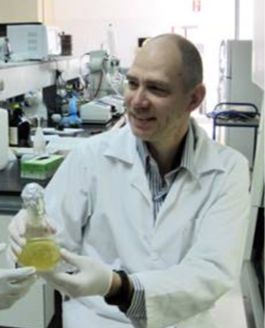 Associate Professor at Sultan Qaboos University (Oman)
Associate Professor at Sultan Qaboos University (Oman) As Director of the Laboratory for Visual Learning at the Harvard-Smithsonian Center for Astrophysics, Dr. Schneps investigated how individual differences in people’s neurology (e.g., due to dyslexia, ADHD, or autism) interact with their abilities to learn and/or perform functions important for science-related careers. Thanks to the fellowship, he was able to carry out a number of groundbreaking investigations that have opened in new directions for research, areas we are currently pursuing with new funding from external agencies such as the National Science Foundation. One important result is that we were able to identify a new method for reading using e-reading devices that helps people with dyslexia read much more easily. The fellowship helped kick start research programs that would have been impossible otherwise, and gave important credibility to the pioneering work in this field. The Burch Fellowship has been an invaluable opportunity.
As Director of the Laboratory for Visual Learning at the Harvard-Smithsonian Center for Astrophysics, Dr. Schneps investigated how individual differences in people’s neurology (e.g., due to dyslexia, ADHD, or autism) interact with their abilities to learn and/or perform functions important for science-related careers. Thanks to the fellowship, he was able to carry out a number of groundbreaking investigations that have opened in new directions for research, areas we are currently pursuing with new funding from external agencies such as the National Science Foundation. One important result is that we were able to identify a new method for reading using e-reading devices that helps people with dyslexia read much more easily. The fellowship helped kick start research programs that would have been impossible otherwise, and gave important credibility to the pioneering work in this field. The Burch Fellowship has been an invaluable opportunity.
2011 - Max Teplitski, (Smithsonian Marine Station at Fort Pierce): Microbial Shields: An Investigation of the Role of Beneficial Bacteria in the Health of Symbiotic Organisms 2012 - Dr. Joanna Christodoulou, (Smithsonian Astrophysical Observatory): The Exploration of the Cognitive Neuroscience of Boredom. Her research has been supported by organizations including the Smithsonian Burch Fellowship; the Spencer Foundation; the Fulbright Foundation; the Mind, Brain, and Behavior Initiative at Harvard; and the National Institutes of Health. She has worked as a reading instructor, taught courses at the undergraduate and graduate levels, and has led professional development workshops for educators and parents. Her role as a clinician at Boston Children’s Hospital informs her work. She earned a Masters in Applied Child Development from Tufts University, a Masters in Mind, Brain, and Education from Harvard’s Graduate
School of Education (HGSE), and an Ed.D. in Human Development and Psychology from HGSE. 2012 - Dr. Bobby Kasthuri, (Smithsonian Astrophysical Observatory): Creating Connectomes with Electron Microscopy. Dr. Kasthuri, has invented a unique electron knife to understand the working of the brain. Using this special knife they are slicing thousands and thousands segments of the brain and analyzing each layer on a supercomputer and then color coding the neurons to plot how they respond to various signals. It is one of the foremost researches on brain and neuro analysis. 2014 – Crystal Kelehear Graham (STRI): Testing the enemy release hypothesis: the global spread of cane toads as an accidental experiment in evolution Dr. Crystal Kelehear’s background is primarily in ecology and evolution, specializing in herpetology, invasive species, parasitology and wildlife disease. Her PhD research focused on questions regarding disease emergence, parasite life-history evolution, and hostparasite ecology, using the invasive cane toad and its parasites in Australia as a model system. 2014 – Caroline Solazzo (MCI): A proteomics approach to the study of paleopathologies in ancient human tissues 2014 – Katie Edwards (NZP): Using an epidemiological approach to identify factors related to health and reproduction of zoo elephants A component that plays a major role in Dr. Katie Edwards’ project is how factors such as enrichment, feeding, exercise, and exhibit design are related to health conditions known to afflict zoo elephants. She explores biomarkers of disease and musculoskeletal condition. 2014 – Eugenio Santillan (SERC): The distribution of Hg methylation genes in natural environments: Insights into the locations of active methylmercury production in ecosystems Dr. Santillan has a diverse, interdisciplinary background in microbial ecology, microbial physiology, and geochemistry with a special interest in subsurface microbiology and geochemistry, microbes in petroleum systems, and environmental microbiology and geochemistry. 2014 – Wanda Diaz-Merced (SAO): Investigating cross-modal brain plasticity among populations of expert adults in cases of late onset blindness As a researcher, Wanda is particularly interested in scientists with impaired eyesight because she is blind herself.
Late-onset diseases that affect the visual system, such as diabetes and glaucoma, are among the leading causes of blindness in adults in the United States. Unlike children who lose their sight while still young, adults who develop late-onset blindness are often already installed in successful careers. As a consequence, they must be retrained to make use of technological accommodations if they are to retain quality of life. This is especially true for adults who have unique visual expertise prior to blindness, say, because they were astronomers, engineers, scientists, or physicians.
As part of her extremely innovative research during her fellowship this past year, Wanda has focused on what sounds stars make rather than how they look and how their sounds can detect patterns in large amounts of astrophysical data. 2015 - Molly McDonough (NMNH): Understanding the Evolutionary Origins of Smallpox Dr. Molly McDonough’s interests lie in molecular systematics, taxonomy, and phylogeography of small mammals, particularly African rodents. As a George Burch Fellow, Dr. McDonough investigates smallpox’s origin in order to better understand what factors lead to the emergence of human diseases. This knowledge will arm us to prevent smallpox-like viruses from emerging in the future. 2015 - Dina Fonseca (NZP): Genomics For Control of Mosquito-borne Diseases 2015 - Leo Buss (NMNH): Colonial Hydroids as Models of Circulatory Networks: Topology, Dynamics and Optimization As a Burch Fellow, Dr. Leo Buss applied empirical and computational tools to explore the circulatory system of colonial hydrozoans as a model system for the study of human circulatory networks (i.e., capillary beds and the vasculature of certain tissues). His ultimate goal was be to determine whether observed vascular designs reflect topologies required to generate a coherent network flow dynamics (e.g., synchronization) or reflects an optimization (e.g., energy minimization) or both. 2016 - Marc Tran Valitutto (NZP): Screening zoonotic viruses in African and Asian pangolins, the most common animal in the illegal wildlife trade. Dr. Valitutto has extensive experience with clinical medicine and infectious disease in a wide variety of species, and a particular interest in pangolins During his time as a George Burch Fellow, Dr. Marc Valitutto sampled wild and confiscated pangolins and screened them for viruses considered of relatively high risk of significant disease spill over at the human-wildlife interface. The aim of this study was to sample at least 100 total pangolins, collecting blood, respiratory secretions, and tissues as available, and screen them using established PREDICT PCR protocols. His project aimed to build regional capacity to identify threats to global health at the human-wildlife interface, while gathering information on the threats to human and wildlife sustainability from the illegal trade in wildlife. 2016 - Thomas Sauvage (NMNH): Elucidating terpene biosynthetic genes (TPS/CYP) in the chemically-defended genus Caulerpa (Chlorophyta). 2016 - Sarah Annalise Gignoux-Wolfsohn (SERC): The Case for Biodiversity: Testing the Dilution Effect on Oyster Diseases. While studying as a Burch Fellow, she tested the hypothesis that increased host biodiversity leads to decreased pathogen prevalence (termed the dilution effect). This study increased understanding of the distribution and interaction of oyster pathogens and informed the use of biodiversity as a mechanism of disease resistance in conservation, restoration, and aquaculture. 2016 - Kelly Bennett (STRI): Population history and adaptive landscape of the invasive arbovirus vectors Aedes aegypti and Aedes albopictus. Through the George Burch Fellowship, Dr. Kelly Bennet conducted a comparative population genomics study to provide insight into the evolutionary dynamics of Aedes. Specifically, she generated high-resolution genomic data for both species from sites that differ in basic environmental parameters, human demography, vector control strategies and the presence/absence of mosquito competitors. This data allowed her to reconstruct the demographic history of Aedes and provide a wider context for understanding the evolutionary imprint underlying invasion. Dr. Bennett tested for signals of local adaptation important for the persistence, spread and competitive interactions of both mosquitoes. Moreover, she determined the extent of connectivity between populations, which is not only fundamental for understanding geographic genetic structure in tropical arthropods, but also provided key considerations for the design of an effective population control strategy. The overall aim of Dr. Bennett’s project was to contribute evolutionary and ecological parameters for use in computational models of arboviral disease control for predicting and managing future outbreaks of dengue and chikungunya in Panama. 2018 - Ashley Edes (NZP): Predicting morbidity and mortality risk in Bonobos (Pan Paniscus) using allostatic load. Cardiovascular disease (CVD) is the leading cause of death in the United States and, as with other chronic degenerative diseases, is associated with stress. Given this connection, clinical researchers designed multi-system scales to measure allostatic load, or stress-induced physiological dysregulation, with a goal of predicting future health risks among sub-clinical
populations. These scales, known as allostatic load indices (ALIs), combine biomarkers from multiple systems (e.g., neuroendocrine, cardiovascular) into a single score. As ALIs have the capacity to revolutionize our understanding of animal health and welfare in zoo-housed primates as well as the potential to inform conservation efforts among wild populations, Dr. Edes focused her dissertation research on bridging this gap by developing and analyzing ALIs for captive western
lowland gorillas. During her fellowship, Dr. Edes further addressed questions of health and welfare in zoo-housed great apes through the development and application of ALIs to bonobos, which are even more closely related to humans than gorillas. Continued development of ALIs in captive species will provide zoos with tools to measure the effectiveness of management operations and welfare efforts. It also will help identify individuals in need of early preventive care. 2018 - Blake Ushijima (NMNH): Investigating the Florida coral disease outbreak and potential probiotic bacteria. Coral disease in Florida has been unprecedented with the vast number of different species affected and the vast area of reef affected. This disease has already made its way to the middle Florida Keys represents an imminent threat to Florida’s shallow water reefs. Dr. Blake Ushijima’s work focused on the role that antibacterial-producing microorganisms play in host
resistance to bacterial infections as well as identifying potentially novel antibiotic compounds. The primary objective of his fellowship research was to investigate the role that antibiotic-producing bacteria play in host resistance to the pathogens responsible for the coral disease. In addition Dr. Ushijima’s research focused on antibiotic compounds produced by coral-associated bacteria and the genes involved with their production. Dozens of coral-associated bacteria appear to produce broad-spectrum antibiotics that could have significant medical or industrial value. 2018 - Natalia Prado (NZP): Identification and analysis of genome-wide SNPs associated with pituitary dysfunction in female African Elephants. The African elephant population in North America is not sustainable, producing only a third the number of calves that are needed. One of the main reasons for this is a high rate of infertility in the population. In a recent analysis of African elephants in AZA zoos (n = 101), 53 females were not cycling normally and of those, 28 exhibited hyperprolactinemia.
Hyperprolactinemia (HypPrl), or chronically high prolactin concentrations, is the most common pituitary disorder in women with symptoms of galactorrhea, amenorrhea and/or infertility. African elephants in zoos also exhibit hyperprolactinemia, which has been found only in females that do not have normal ovarian cycles. During her fellowship Dr. Natalia Prado conducted research with the objective to identify and analyze genome-wide single-nucleotide polymorphisms (SNPs) across three different study groups to develop a coast-effective tool to screen the population and provide insight into the etiology of a disorder affecting a large proportion of reproductively aged female African elephants in U.S. zoos. 2019 - Kelly Speer (NZP/NMNH): The evolutionary transition to blood feeding and implications for disease ecology. Arthropod-vectored diseases like leishmaniasis, malaria, and African sleeping sickness have caused substantial human suffering and death. These diseases infect humans when a pathogen is transmitted by an arthropod during a bloodmeal. For her Burch Fellowship research, Dr. Kelly Speer examined the factors that enable arthropods to feed on blood and transmit pathogens. Specifically, she focused on the role of the microbiome in facilitating the transition to blood-feeding in calyptrate flies and the ability of the microbiome to modulate vector competence of calyptrate flies in the superfamily Hippoboscoidea. 2019 - Audrey Lin (NMNH): Evolution of human antiviral genes. Modern humans evolved in Africa and then spread throughout the world, adapting to the selective pressures of the local climates and food sources. Some of the most important selective forces on human evolutionary history are pathogens, and a major feature of the human genome are mechanisms to cope with the constant impact of infectious disease. Human immunity has been shaped by positive selection on immune genes, including introgression from other ancient populations that were adapted to their environment and its local pathogens. Multiple polymorphic immune genes, such as Toll-like
receptors and HLA alleles, have been acquired through admixture with Denisovans or Neanderthals. During her fellowship Dr. Audrey Lin investigated the impact of ancient epidemics on introgression from Denisovans to modern human populations, and immune genes that interact with viruses. 2010-2019
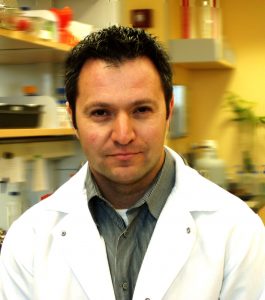 Dr. Teplitski, Associate Professor at the University of Florida, focuses on understanding the curative functions of native microorganisms. It has been known for decades that beneficial bacteria (probiotics, biocontrol agents, etc) have a role in the health of host. We have recently demonstrated that native coral-associated microbes have the potential to disrupt progression of a coral disease under laboratory conditions using a model system. With the George E. Burch Fellowship, I have a unique opportunity to work with the world’s best team of marine chemical ecologists (led by Dr. Valerie Paul) at the SMS at Fort Pierce, and also have access to reef ecosystems where we can observe the consequences of these interactions. Even though I am only a few months into the project, this has been a tremendous opportunity and a rewarding (steep!) learning curve. We have already had a chance to collect two sets of samples in Belize and are currently in the process of analyzing them.
Dr. Teplitski, Associate Professor at the University of Florida, focuses on understanding the curative functions of native microorganisms. It has been known for decades that beneficial bacteria (probiotics, biocontrol agents, etc) have a role in the health of host. We have recently demonstrated that native coral-associated microbes have the potential to disrupt progression of a coral disease under laboratory conditions using a model system. With the George E. Burch Fellowship, I have a unique opportunity to work with the world’s best team of marine chemical ecologists (led by Dr. Valerie Paul) at the SMS at Fort Pierce, and also have access to reef ecosystems where we can observe the consequences of these interactions. Even though I am only a few months into the project, this has been a tremendous opportunity and a rewarding (steep!) learning curve. We have already had a chance to collect two sets of samples in Belize and are currently in the process of analyzing them. 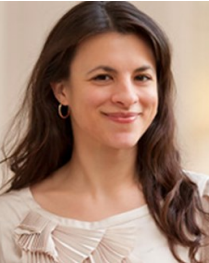 Dr. Joanna A. Christodoulou works at the intersection of education and neuroscience. Her program of research, conducted at MIT in the Gabrieli Lab, focuses on neural and behavioral correlates of development, difficulties, and intervention effects for reading and language throughout the lifespan.
Dr. Joanna A. Christodoulou works at the intersection of education and neuroscience. Her program of research, conducted at MIT in the Gabrieli Lab, focuses on neural and behavioral correlates of development, difficulties, and intervention effects for reading and language throughout the lifespan.
 Harvard Professor, Dr. Kasthuri studied brain development from infants to adult’s nervous system. The Burch Fellowship allowed him to make a major advance in brain development through collaborative working with previous Burch Fellow Dr. Ronald Walsworth and his research group at the Smithsonian Astrophysical Observatory.
Harvard Professor, Dr. Kasthuri studied brain development from infants to adult’s nervous system. The Burch Fellowship allowed him to make a major advance in brain development through collaborative working with previous Burch Fellow Dr. Ronald Walsworth and his research group at the Smithsonian Astrophysical Observatory.
 As a Burch Fellow, Dr. Caroline Solazzo’s research focuses on the proteomics analysis of hair and soft tissues from mummies. This is to better understand the preservation or biodegradation of proteins over time.
As a Burch Fellow, Dr. Caroline Solazzo’s research focuses on the proteomics analysis of hair and soft tissues from mummies. This is to better understand the preservation or biodegradation of proteins over time. 
 Currently working for the US Environmental Protection Agency (EPA), as a Burch Fellow, Dr. Eugenio “Jay” Santillan studied the organisms and genes involved in cycling Mercury (Hg) contaminating the environment. He also sought to understand the extent to which Methylmercury (MeHg) production is happening as well as the possible routes for entry into the human foodweb.
Currently working for the US Environmental Protection Agency (EPA), as a Burch Fellow, Dr. Eugenio “Jay” Santillan studied the organisms and genes involved in cycling Mercury (Hg) contaminating the environment. He also sought to understand the extent to which Methylmercury (MeHg) production is happening as well as the possible routes for entry into the human foodweb.  During the XXIX International Astronomical Union (IAU) General Assembly Annual Conference in Honolulu, HI, Dr. Wanda Diaz-Merced conducted an experiment to test a perception technique that uses sound as an adjunct for visual processing, facilitating the identification of signal in noisy data. The techniques purpose is to enhance one’s ability to spot low-level features in data and to facilitate data analysis by scientists with impaired vision.
During the XXIX International Astronomical Union (IAU) General Assembly Annual Conference in Honolulu, HI, Dr. Wanda Diaz-Merced conducted an experiment to test a perception technique that uses sound as an adjunct for visual processing, facilitating the identification of signal in noisy data. The techniques purpose is to enhance one’s ability to spot low-level features in data and to facilitate data analysis by scientists with impaired vision.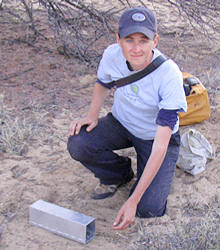
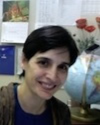 By working at the National Zoological Park as a George Burch fellow, Dr. Dina Fonseca set out to create novel approaches to protect against vector-borne diseases, which threaten humans and wildlife, while furthering understanding of insect evolution. Dr. Fonseca’s proposed research also sought to uncover potential targets for the development of new repellents and control strategies. Along those lines, she intended to uncover critical genes in the sex determination pathway of mosquitoes in order to improve sterile male approaches for mosquito control. She worked on the ecology and evolution of mosquitoes, particularly those introduced during the last 1-400 years into new areas.
By working at the National Zoological Park as a George Burch fellow, Dr. Dina Fonseca set out to create novel approaches to protect against vector-borne diseases, which threaten humans and wildlife, while furthering understanding of insect evolution. Dr. Fonseca’s proposed research also sought to uncover potential targets for the development of new repellents and control strategies. Along those lines, she intended to uncover critical genes in the sex determination pathway of mosquitoes in order to improve sterile male approaches for mosquito control. She worked on the ecology and evolution of mosquitoes, particularly those introduced during the last 1-400 years into new areas.

 Dr. Thomas Sauvage studies the molecular diversity of siphonous green algae. As a Burch Fellow, he proposed to elucidate the molecular diversity, expression and chromosomal organization of terpene biosynthetic genes (TPS/CYP) through transcriptome and targetted sequencing of the nuclear genome of C. ashmeadii. This research provided insights into the genetic machinery underlying the production of terpenes in this genus, and more broadly the Chlorophyta, for future metabolic engineering and biomedical applications.
Dr. Thomas Sauvage studies the molecular diversity of siphonous green algae. As a Burch Fellow, he proposed to elucidate the molecular diversity, expression and chromosomal organization of terpene biosynthetic genes (TPS/CYP) through transcriptome and targetted sequencing of the nuclear genome of C. ashmeadii. This research provided insights into the genetic machinery underlying the production of terpenes in this genus, and more broadly the Chlorophyta, for future metabolic engineering and biomedical applications. Dr. Sarah Gignoux-Wolfsohn is a disease ecologist focused on marine systems. She uses genetic tools to examine marine diseases from both the host and pathogen sides and is also interested in the broader implications of marine diseases on our changing global health. Focused on better understanding the Caribbean coral disease white band disease, Dr. Gignoux-Wolfsohn has helped to characterize the spread of this disease and is am currently working on identifying bacteria associated it.
Dr. Sarah Gignoux-Wolfsohn is a disease ecologist focused on marine systems. She uses genetic tools to examine marine diseases from both the host and pathogen sides and is also interested in the broader implications of marine diseases on our changing global health. Focused on better understanding the Caribbean coral disease white band disease, Dr. Gignoux-Wolfsohn has helped to characterize the spread of this disease and is am currently working on identifying bacteria associated it.

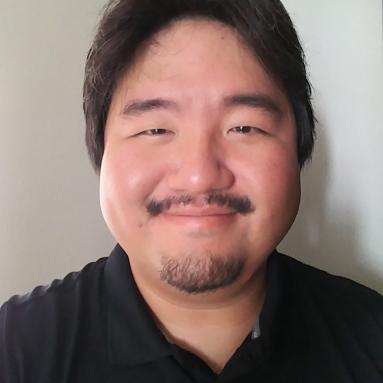
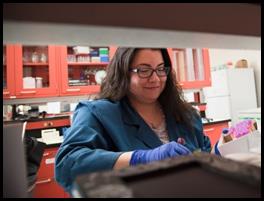


FAQ
How can I apply?
Apply through SOLAA.







